About the strong walls of Brno in the past, more than one commander “broke his teeth”. The city was tested for strength by the Hussites, Swedes, Turks and the Prussian army. Only the cunning Napoleon did not besiege the bastions in vain, but simply ordered the strong ring of defensive walls to be blown up. Today, on the site of the former fortifications, there is a ring road.
Brno is surrounded by a picturesque green plain, where medieval castles are lost. And in the city itself, a tourist will definitely have something to occupy his time with: the old squares and quarters beckon to look around the corner, make another turn and get off the intended route. City cathedrals still remember melodic chants of past centuries. Their eerie crypts, as before, are full of dark secrets.
What to see and where to go in Brno?
The most interesting and beautiful places for walking. Photos and a short description.
- Spilberk Castle
- Villa Tugendhat
- Freedom Square
- Square Vegetable Market
- Old Town Hall
- Cathedral of Saints Peter and Paul
- Monastery of the Capuchins
- Church of St. James
- Technical Museum Brno
- Moravian Gallery
- Moravian Museum
- Museum of Gypsy Culture
- Observatory and Planetarium
- VIDA! Science Center
- Magen Theater
- Janacek Theater
- Moravian Karst
- Abyss of Macocha
- Veverzhi Castle
- Pernstein Castle
- Castle Slavkov
- Peace grave
- Zoo Brno
- Park Luzhanki
- Ignis Brunensis
Spilberk Castle
The castle was built in the 13th century and first served as the residence of kings and margraves. By the 17th century, it began to acquire baroque features and lose its Gothic appearance. During the Austrian monarchy, a prison for dangerous criminals was organized on the territory of Špilberk. The gloomy dungeon worked until the middle of the 19th century. He "became famous" as the most severe dungeon of the Austrian Empire. Today, the castle houses an exposition of the city museum.

Villa Tugendhat
Functionalist villa built by architect L. M. van der Rohe in the 1930s. He also worked on the interior design of the building. In 2001, the building was added to the UNESCO World Heritage List. The villa was built from exotic materials using advanced technologies at that time, so its construction cost a decent amount. The owners of the building left the country in 1938, so over time it became the property of the city.
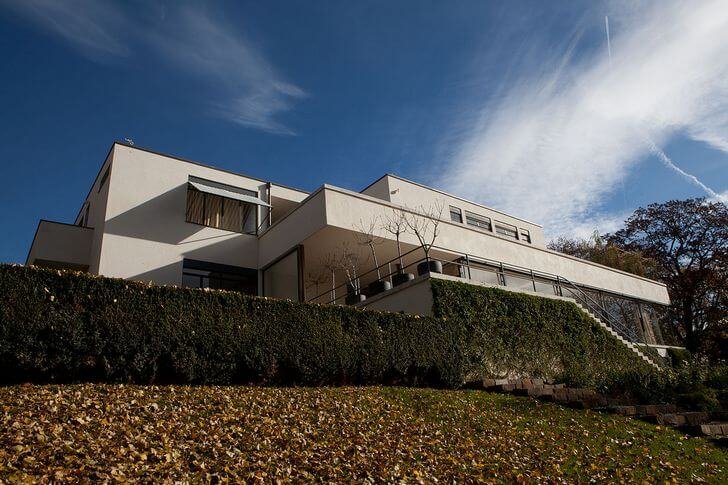
Freedom Square
Freedom Square is the largest in Brno and one of the oldest. It appeared in the distant XIII century. In the Middle Ages, it was surrounded by the houses of wealthy citizens, which were rebuilt in the neo-Renaissance style in the 19th-20th centuries. In the middle of the square stands the Plague Column monument, erected in 1648 after the liberation of Brno from the Swedish troops and the threat of the plague.

Square Vegetable Market
Since the 13th century, vegetables and poultry have been traded on the square, which is why it got its name. Over time, magnificent palaces surrounded it, but the bazaar regularly continued to work (it still exists today). In the center of the square there is a baroque fountain "Parnassus" of the 17th century. The sculptural group depicts three civilizations: Greek, Persian and Babylonian. Europe sits in the middle on a defeated dragon.
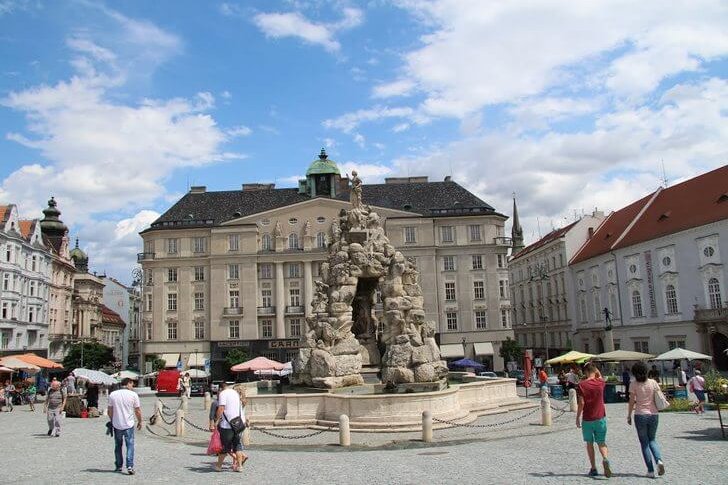
Old Town Hall
The Brno Town Hall was built in 1240 in the Gothic style. Until 1935, its appearance changed, acquiring elements of the Baroque and Renaissance. The city council has been sitting in this building since the end of the 14th century. In the 20th century, he moved to a new location. Today, the town hall houses the cultural center of Brno, where exhibitions and various events take place. Tourists at the entrance are met by locals in national costumes.
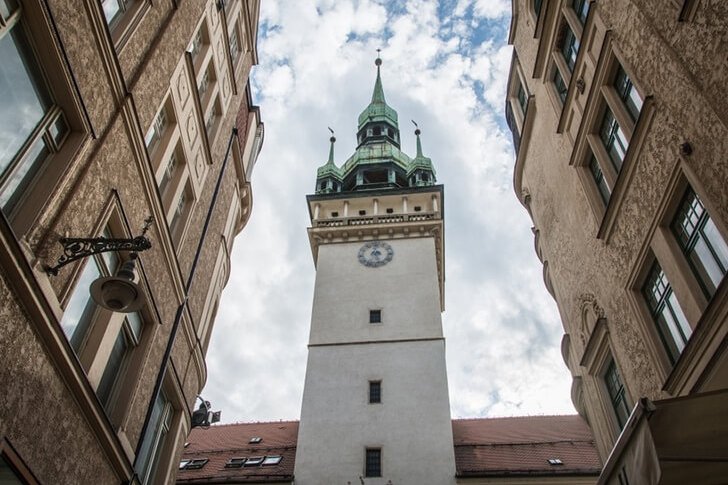
Cathedral of Saints Peter and Paul
Catholic church in honor of the holy apostles. According to sources, it was founded in the XI-XII (XIII) centuries. At first it was built in the Romanesque style, and a few centuries later it was rebuilt in the Neo-Gothic style. The interior of the cathedral is made in the Baroque style. Two symmetrical towers 84 meters high were erected at the beginning of the 20th century according to the project of A. Kirstein. The building is recognized as one of the most valuable architectural monuments of South Moravia.

Monastery of the Capuchins
The monastery is located on the square of the same name, which at first glance does not attract the attention of a tourist. Only the monastery church in the Baroque style is available for inspection, the rest of the buildings are not so easy to get to. Inside the monastery there is a crypt with the mummies of the first monks. The brothers were buried here in this form until the prohibition decree of Joseph II of Habsburg. Today the tomb is open to the public.
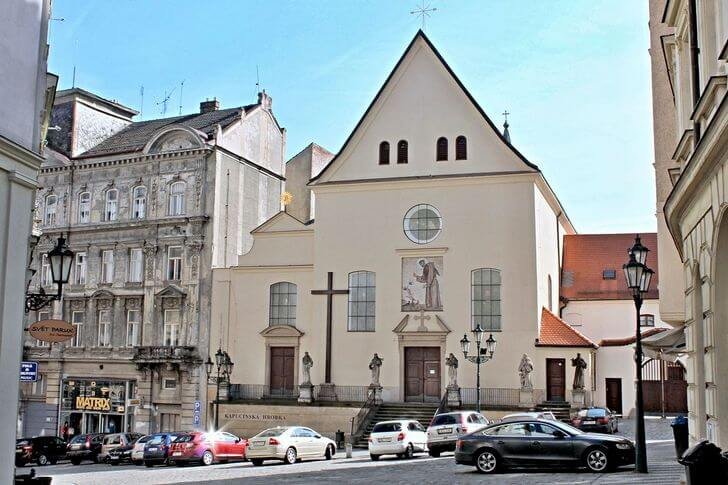
Church of St. James
The church was built in the 13th century in the Gothic style. In the 16th century, a Renaissance tower over 90 meters high was added to it. Not so long ago, the remains of more than 50 thousand people were discovered in the temple catacombs. The fact is that the local cemetery was filled in the Middle Ages and the old bones were simply piled under the slabs of the church to make room for new graves. So over time, a large ossuary was formed.

Technical Museum Brno
In the museum you can look at a collection of vintage local cars, rare clockwork, cameras, typewriters and other devices. It also presents the achievements of the aviation industry and the field of computing technology. The collection is located in 11 themed rooms and occupies a rather impressive area. The museum has a library, a lecture hall and a scientific laboratory.

Moravian Gallery
The museum collection occupies as many as five buildings: Prazhuk and Mistrodzhitelsky palaces, Yurkovic's villa, J. Hoffmann's house and another city mansion. The Moravian Gallery is considered the second most important in the Czech Republic after the National Gallery in Prague. In addition to paintings, it exhibits objects of decorative and applied art: ceramics, textiles, glassware and other masterpieces created by Czech masters.
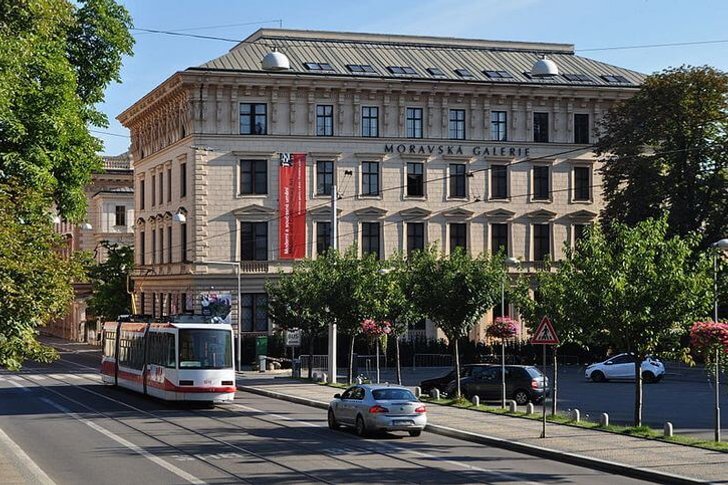
Moravian Museum
The museum was founded in 1817. Today it is the largest and oldest in Moravia. Its collection contains about 6 million copies, which are located in several buildings. The main exposition is located in the baroque mansion of the 17th century - the Dietrichstein Palace. He became famous for the fact that the reigning persons stayed here, and also Field Marshal M.I. Kutuzov stayed for several days.

Museum of Gypsy Culture
A unique exposition that tells about the culture and life of the Moravian gypsies. The museum opened in 2003 after collecting exhibits from all over the Czech Republic and neighboring countries for a future exhibition for 12 years. Its appearance was made possible thanks to state funding and private donations from the settled gypsies of Brno. The museum has a library where rare documents and books are stored.
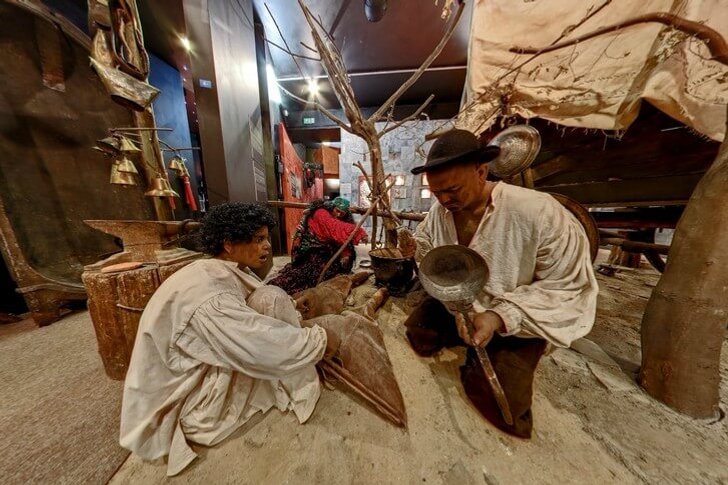
Observatory and Planetarium
A scientific and entertainment complex designed to draw the attention of visitors to the sciences and popularize natural science. The main focus of attention, of course, is on the Cosmos - its properties, mysteries, problems and prospects. The complex includes a large and small planetarium, an observatory equipped with modern telescopes, an "explorarium" and an observation deck.

VIDA! Science Center
Scientific and experimental center, where there is a lot of interesting things for adults and children. Visitors can conduct their own experiments here with the help of exhibits and study natural phenomena, comprehend physical laws. Sometimes colorful shows are held in the center, where complex phenomena are told in a playful way, but these performances are given only in Czech.
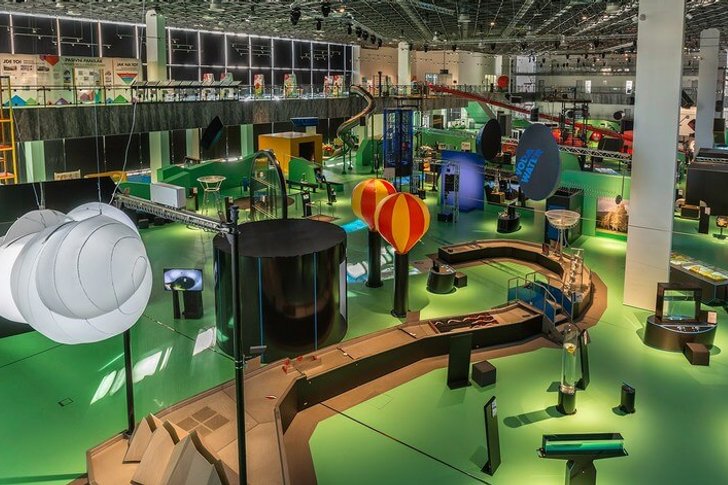
Magen Theater
The building of the theater stage was built at the end of the 19th century according to the design of the Austrian masters G. Gellner and F. Felner in a mixed style with elements of neo-baroque, neo-renaissance and neoclassicism. The theater had electric lighting, which at that time was a great luxury. Today, dramatic performances take place on the stage, the troupe of the Brno National Theater performs here.
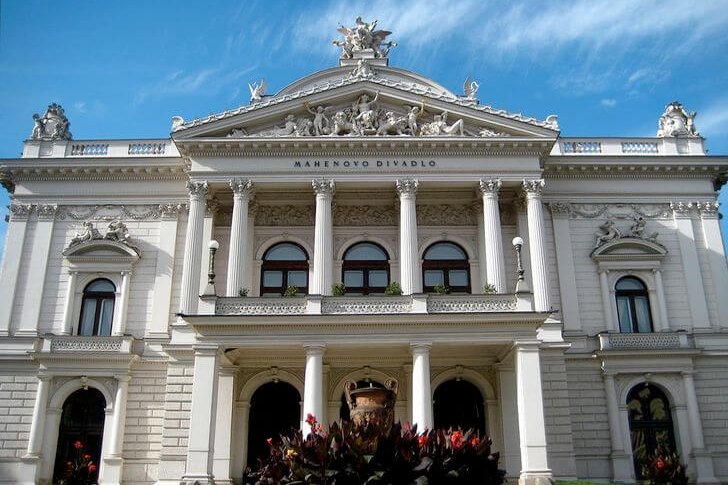
Janacek Theater
Brno Opera Stage, founded in 1965. The name is given in honor of the Czech composer. An architectural competition for the best design of the future theater was held from 1910 to 1957. As a result, a laconic and functional project without any classical or baroque elements won. The auditorium is designed for 1300 people. Since its foundation, more than 20 ballet and opera premieres have taken place on the stage.
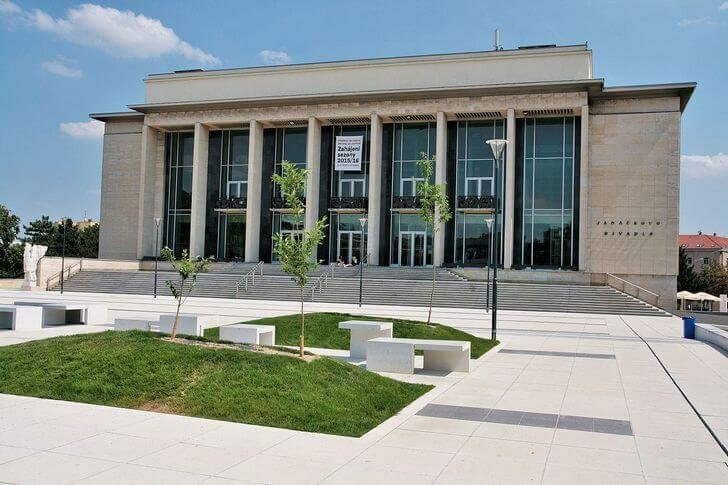
Moravian Karst
The karst massif is 25 km long and 2 to 6 km wide. There are more than 1000 caves on its territory, but only 4 of them are open to the public: Balcarka, Punkva, Stolbno-Shoshuvskaya and Katarzynska. This natural attraction is equally in demand among tourists and local residents. The Moravian Karst is one of the most impressive cave systems in all of Europe.

Abyss of Macocha
Natural monument in the vicinity of Brno in the Moravian Karst. Residents of the city and surrounding villages believed for a long time that the abyss had no bottom at all, until at the beginning of the 18th century the local monk Lazar Shopper descended into it. But people still continued to tell dark stories about this place. The fault was formed as a result of the collapse of the vaults of a large cave. Its length is about 180 meters, the maximum depth is 135 meters.

Veverzhi Castle
Medieval castle 13 km from Brno, located on a green cape near the Brno reservoir. It is one of the oldest and largest in the entire Czech Republic. According to legend, Veverzhi was founded in the 11th century by Konrad I of Brno. The building survived several sieges and reconstructions. During the Second World War, it was destroyed during the fighting. Large-scale restoration began already in the 21st century.
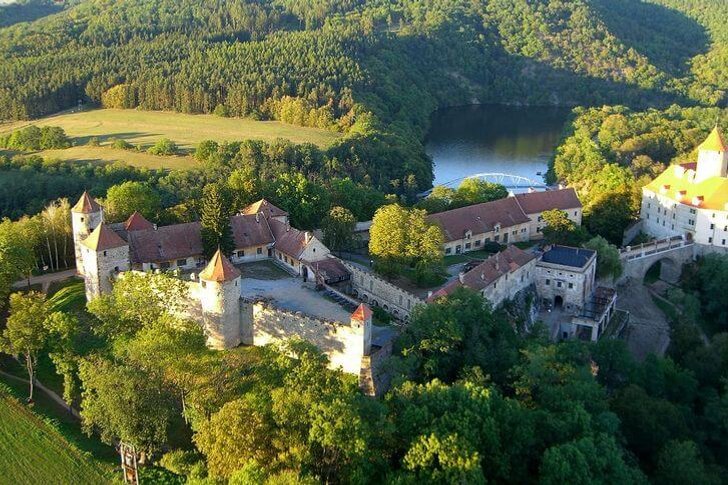
Pernstein Castle
The family property of the noble Pernstein family, located about 40 km from Brno on a rocky hill. Here the family lived until the end of the 16th century. The building was erected in the 13th century in the Gothic style. Over the following centuries, slight changes were made to its appearance. Today, tourists see a castle of the 16th century. In the past, it often became a film set for historical films.
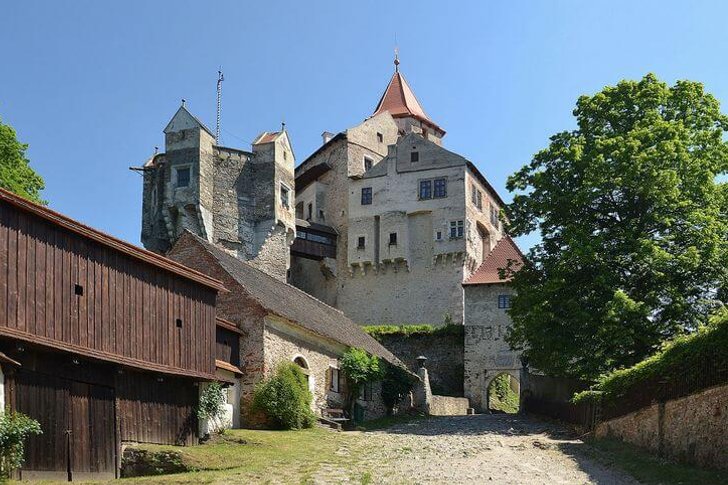
Castle Slavkov
The second name of the castle is Austerlitz, after the city known since the Napoleonic Wars. The very first building stood on the site of a Baroque palace as early as the 13th century. Then it was remade in the Renaissance style, but only by the beginning of the 19th century acquired the features of an elegant and magnificent baroque. It was in Slavkov in 1805 that France and Austria signed an agreement after the devastating (primarily for the Russian Empire) Battle of Austerlitz.
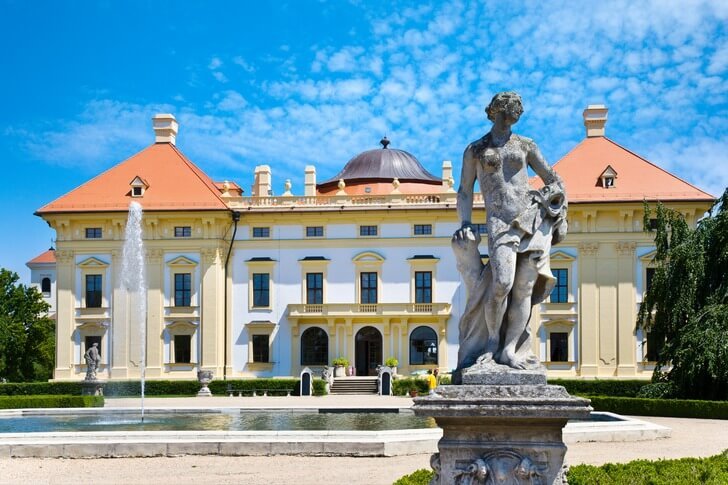
Peace grave
Memorial complex dedicated to the numerous victims of the Battle of Austerlitz. The main object of the composition is the Mound of Peace, which is located on the battlefield and rises above the surrounding landscape. The monument looks like a mound. There is a cross on its top, and at the edges there are figures with shields, symbolizing the countries participating in the battle. Inside the mound there is a chapel and a crypt.

Zoo Brno
The menagerie appeared in Brno in 1937. In 1953 it moved to its current location. More than 300 species of animals (1500 thousand individuals) live in the zoo. The number of guests is growing as the animals have offspring. The local collection of birds and reptiles deserves special attention. For children, there is a mini-zoo with piglets, goats and tame rabbits that you can pet.
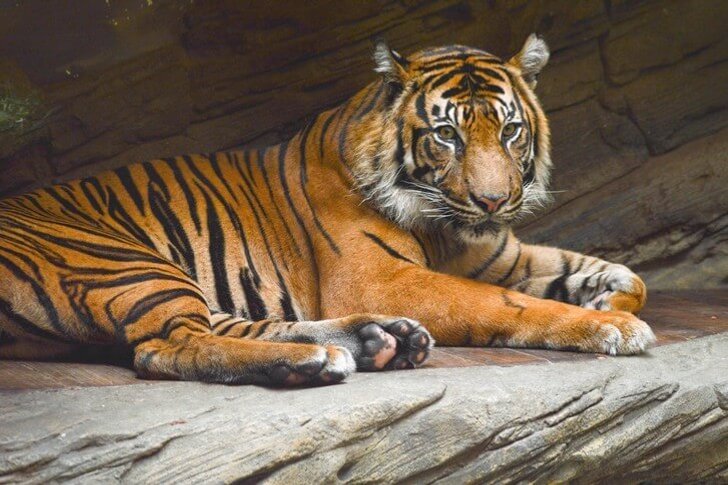
Park "Luzhanki"
The park is located near the historical center of Brno. Since the 16th century, it has been known as the "Jesuit Garden", since earlier these lands belonged to the Order of St. Ignatius. After the abolition of this monastic association, according to the imperial decree, the park was transferred to the city. By that time, it required renovation, which was done by the head gardener of Brno A. Bisinger. In 1788, Luzhanki opened to the public.
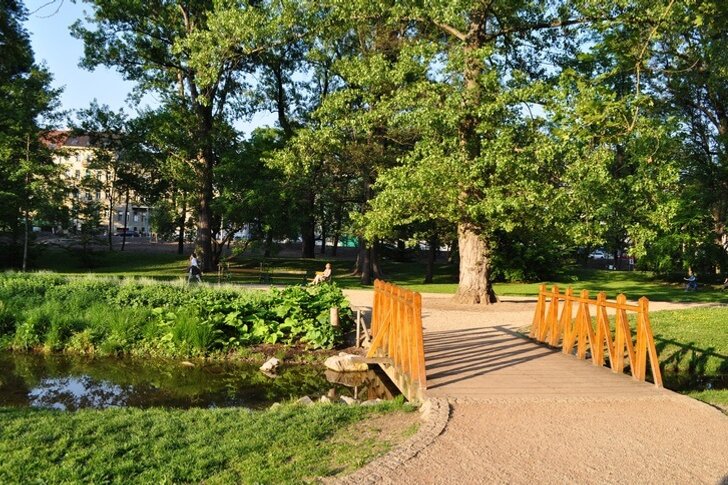
Ignis Brunensis
Fireworks parade, which takes place annually in Brno. Thousands of tourists come to admire this spectacle. The festival usually lasts two weeks. Within its framework, evening colorful shows are organized every day, where participants blow up the most bizarre fireworks, trying to impress the jury and the audience. There are other interesting events in the parade program.
